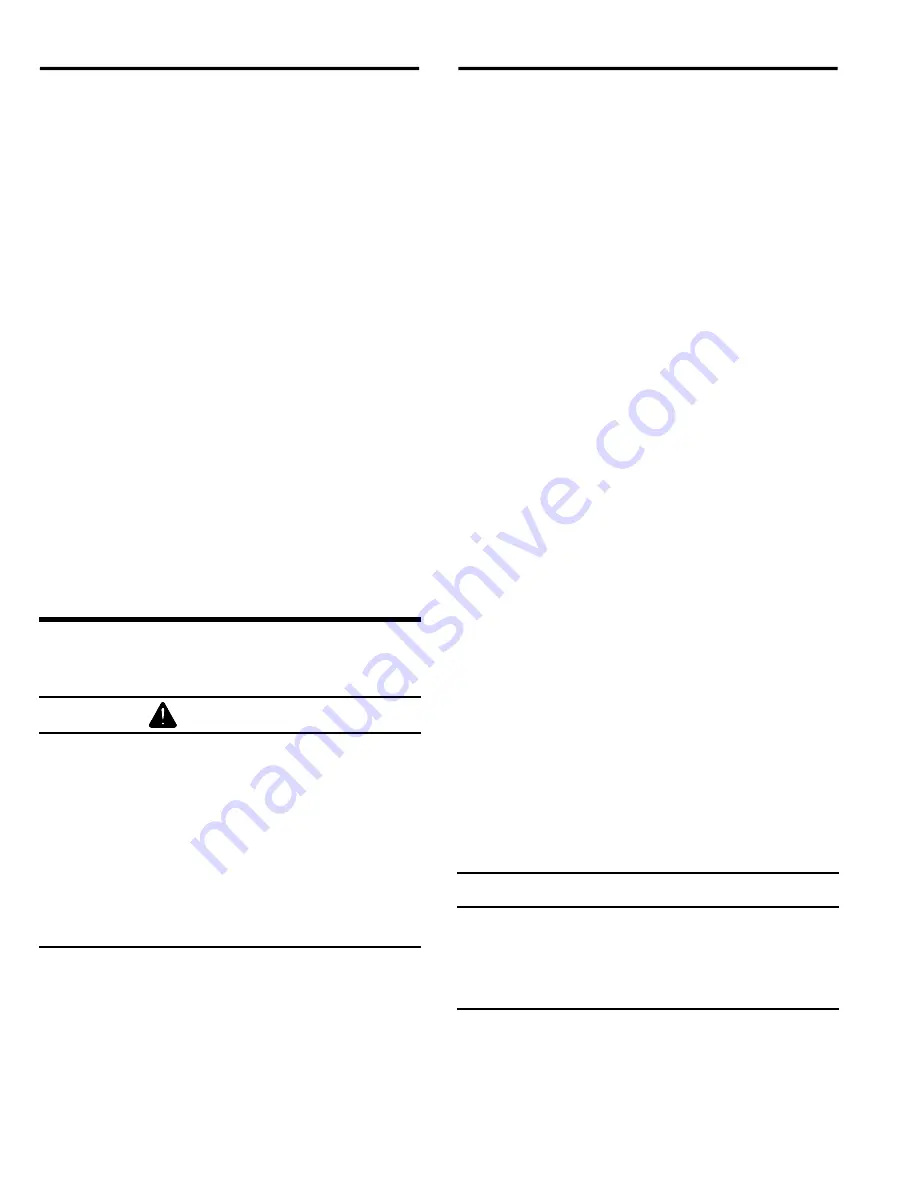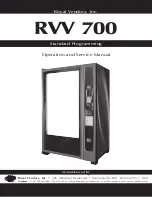
PULSAR
®
PLUS 55-S SUCTION BLAST CABINET
Page 22
© 2021 CLEMCO INDUSTRIES CORP.
www.clemcoindustries.com
Manual No. 30423
5.10.9
Adjust the exhaust damper, per Section 5.4, so
the manometer matches the starting points noted in
Paragraph 5.4.3.
5.10.10
After taking readings and making adjustments
as needed:
5.10.10.1
When using a needle:
Replace the needle
protector, close the manometer valves, and store the
manometer in the original container in a clean area.
5.10.10.2
When using a permanent fitting:
The
manometer may remain on the reclaimer body after both
manometer valves are closed.
Or
Remove the vinyl tubing from the barbed fitting, close
both manometer valves, and store the manometer in the
original container in a clean area.
Place the vinyl barb cap, also provided with the
manometer, over only the first tapered barb; pushing the
cap all the way onto the barb may make it difficult to
remove when taking later readings. Capping the fitting
prevents leaks that alter the reclaimer’s separation
efficiency. Air drawn into the reclaimer causes carryover
of good media to the dust collector.
6.0
PREVENTIVE MAINTENANCE
Failure to wear an approved respirator and
personal protection when servicing dust-laden
areas of the cabinet and dust collector, as well as
when emptying the dustbin, could result in lung
disease, serious skin or eye irritation, or other
health issues. Toxicity and health risk vary with
type of media and dust generated by blasting.
The respirator must be approved for the type of
dust generated. Identify all material being
removed by blasting and obtain a safety data
sheet (SDS) for the blast media.
6.1
Inspection Notes
To avoid unscheduled downtime and to improve safety,
establish an inspection schedule. Inspect all parts
subjected to media contact, including the gun and
nozzle, media hose, flex hose, wear plate, and all items
covered in this section. Adjust the inspection schedule
as needed, based on the following:
Usage:
Frequently used cabinets require more
maintenance
and
inspections
than
those
occasionally used.
Type of media:
Aggressive media wears parts
faster than nonaggressive media.
Condition of parts being blasted:
Heavily
contaminated parts require more maintenance to
the cabinet’s media recovery system.
Friability of media:
Media that rapidly breaks
down require more maintenance to the cabinet’s
media recovery system and dust collector.
6.2
Daily Inspection and Maintenance Before
Blasting with the Air OFF
6.2.1 Check media level:
Check media level in
reclaimer and refill, as necessary.
6.2.2 Inspect reclaimer debris screen and door
gasket:
Check reclaimer debris screen for debris. The
screen is accessible through the reclaimer door. With the
exhauster OFF, remove the screen and empty it daily or
when loading media. Empty the screen more often if part
blasted causes excessive debris. Do not operate the
machine without the screen in place; oversized
byproduct from blasting could plug the nozzle. While the
door is open, inspect the door gasket for wear or
damage. Replace the gasket at the first sign of wear.
6.2.3 Drain compressed-air filter:
The cabinet is
equipped with a twist-type manual-drain air filter. Drain
the filter at least once a day, and more often if water is
present. Moist air inhibits the flow of media. Drain the air
line and receiver tank regularly. If the filter does not
remove enough moisture to keep media dry and flowing,
it may be necessary to install an air dryer or aftercooler
in the compressed-air supply line.
6.2.4
Inspect dustbin – Figure 29
Inspect dust level in the dustbin daily. Empty
the dustbin when no more than half-full and
when adding new media. Failure to monitor the
dust level will overfill the collector, requiring
extensive cleaning.
6.2.4.1
Empty the dustbin regularly. Start by checking
the container at least daily and when adding media, then
adjust frequency based on usage, contamination, and
friability of the media.
















































